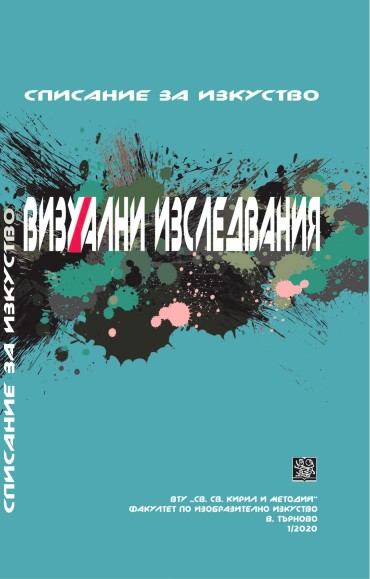Мястото на живописта в проблема за композицията на кино кадъра
The Place of Painting in the Problem of Cinema Frame Composition
Author(s): Gergana TabakovaSubject(s): Fine Arts / Performing Arts, Visual Arts, Film / Cinema / Cinematography, History of Art
Published by: Великотърновски университет „Св. св. Кирил и Методий”
Keywords: Visual arts; formal structure; composition; Sergei Eisenstein; movement; montage
Summary/Abstract: I offer a glimpse at the essence of the visual arts, which is related to the conceptual and the visual constructions through which the image is constructed. Although very different from painting, cinema, as a visual art, is influenced by it at a depth that is hard to imagine.I am taking into account the views of Sergei Eisenstein – one of the proponents of the formal theory of cinema, displayed in his theoretical works, as well as several of his films. Changes in the visual arts that result from the advent of photography give new meaning and role of painting. Artists occupied in painting are beginning to look for new ways to solve the problem of three-dimensional space in a two-dimensional surface. In the time that cinema develops own language, it sets to itself similar tasks. At that moment, cinema turns to the familiar visual-artistic experience and its forms in order to construct its own imaginative language. Cinema, like painting, gives us the joy of looking at the form in which the correlation of the elements is sensed. Accordingly, in order to bring pleasure and meaning, this form is created in constructions that we know from the field of painting. Editing, the basis of cinematic language, is built by putting together frames that serve as building blocks of the film. In this capacity they are of utmost importance. It is frame’s compositional organization, which at first takes place in a two-dimensional space as in picture that plays a major role in the approach to the editing. The composition of the frame which is the core of the editing process is built in the parameters of the main points through which the composition in painting can be built – rhythm, dynamics, statics, symmetry, asymmetry, analysis and synthesis of form, and at a later stage of the development of cinema – even color. The visual arts are based on similar structures and ways of building the form though they do it through different languages. There are unifying principles that define the world of images. Whether they are moving or static, their construction is often done on the basis of similar intentions and through similar instruments. Knowing them, understanding them, is a tool for creating quality images.
Journal: Визуални изследвания
- Issue Year: 4/2020
- Issue No: 1
- Page Range: 76-81
- Page Count: 6
- Language: Bulgarian

